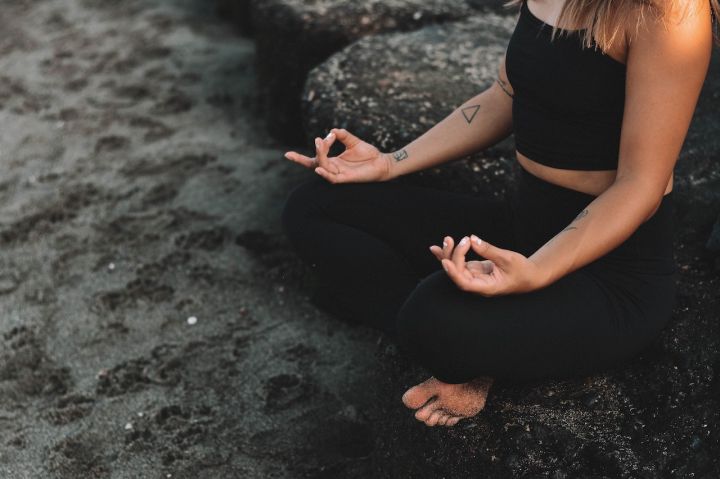Arms, Is Core Strength Enough? Try This Yoga Asana!
Baby bakasana is one of the less common yoga poses. The name may sound simple, but in fact this pose is very challenging and requires strength and self-awareness.

Think forearm plank is hard? In fact, practising this pose regularly is the key. The plank is always working in your upper body and core, which prepares you for the small crow pose.

Less common, this pose acts as a modification of advanced forearm balance karandavasana (duck pose) with a more delicate lower body. Rather than simply bringing your weight forward onto your forearms, you initially enter peacock pose with your forearms balanced and straight legs extended upwards, to increase the challenge, fold your legs into lotus pose and then slowly lower the still crossed legs onto your upper arms. This is karandavasana.

Little crow pose is easier than duck pose, however, as it avoids leg twists, fairly intense hip openings and inverted sections.
Is little crow pose easier than crow pose?
Psychologically speaking, little crow pose is more reassuring when facing the ground than raven pose, where your face is further from the ground, meaning that in little crow pose your face may touch the ground more easily.

Physically, both poses are very demanding on your shoulders and arms and require a fair amount of abdominal strength and stability, with little crow pose requiring more arm strength and crow pose requiring more core stability.

What are the benefits of little crow pose?
The important area of the asana is your shoulders. The movement you want to take to counteract tipping is to have your upper arms pulling strongly towards the centre of the mat and your shoulders and core resisting the tendency to tip or fall towards the mat. In addition, practising little crow will stretch your forearms and back, benefiting you in other yoga poses as well as in your daily life.

How to get into little crow pose
1. Warm your body
It is vital to prepare your spine, shoulders and hips for little crow pose. As a warm-up, you will need to practice the following poses, preferably interspersed with standing poses

Cat/cow pose
Worship pose
Baby pose
Lizard pose
Forearm plank pose
Dolphin
Wreath pose

To move into little crow pose, start in wreath pose. Spread your knees and place your hands in front of you with your arms straight. Lower your heels towards the mat behind you. Stay here for 8 breaths.

2. Place your forearms in the proper position
Keeping low from step 1, place the forearms parallel to each other on the mat. Place your knees on the upper outer edge of your arms. Spread all fingers evenly so that your eyes rest on your fingertips and begin to lean forward, actively placing your knees as high as possible on your upper arms.

3. Continue leaning forward
Continue to lean forward so that your face is closer to the ground. Feel that you are folding your biceps over your forearms. Be careful not to lift your elbows, they should remain flat on the mat and do not allow the weight of your legs to rest your shoulders on your arms or shoulders.
4. Enter little crow pose

Continue to place your knees on your arms while leaning forward a little and lifting your feet off the floor. Tighten your elbows down and lift your core off the mat, keeping your eyes slightly forward and not letting your neck feel any pressure. If you can, activate your core and pull your heels towards your hips.

If your face is too close to the ground, you may not be able to 'lift' into the pose. You will feel the pose even if you are not off the ground. Stay here for 5 breaths and then return your feet to the floor.
